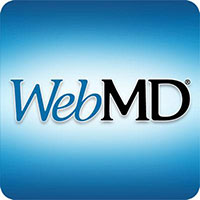After Battling Flint Water Crisis, Doc Faces COVID Fight
What your doctor is reading on Medscape.com:
APRIL 25, 2020 — Mona Hanna-Attisha, MD, MPH, a pediatrician nationally recognized for her efforts in exposing the water crisis in Flint, Michigan, is recovering, albeit slowly, from an illness that frightens all healthcare professionals: COVID-19. She shared her story with us and spoke to the unique challenges that this pandemic presents to her community. This interview has been edited for clarity and length.
It is a piece of rare good news to learn that you are recovering from your own fight with a coronavirus infection. Can you tell us your story?
My first recognition that I was ill began with a low-grade fever. Actually, in truth, not even what we in pediatrics would call a fever—just under 100˚ F. I also had debilitating, exhausting body aches. Every part of my body hurt, all of the time. I even hurt during sleep. Then came headache and a mild sore throat.
The acute symptoms largely resolved after a few days. I hoped it was just any old virus, but I think everybody who has an illness right now thinks that they have COVID. And with those thoughts come, obviously, fear and anxiety. Even though you know that 80% of people who get this infection seem to recover reasonably well, we’ve all read the literature.
I began to have conversations with my husband: Is our will up-to-date? Are our guardianship papers done? This is not dissimilar to conversations that so many of my healthcare colleagues are having right now.
After the acute symptoms resolved, I developed that cough that we’ve all heard. At the same time that my cough presented, I developed the most bizarre and disorienting symptom of lost sense of smell and taste. That’s what clinched it for me and led me to seek diagnostic testing at a drive-through site in metro Detroit that was set up for healthcare professionals—though it still took 8 days to get results.
It’s now over 4 weeks since the onset of symptoms. I still have no sense of smell and taste. I can’t tell you how bizarre that is. It’s disorienting. As you noted when we first started talking, I have a persistent cough. That is what is unique with this illness: It waxes and wanes. It is a much longer duration of illness, with ups and downs, compared to typical cold or influenza. But I’m so grateful that my course was more mild than so many others’.
What about your husband and kids? What did you do to isolate yourself from them?
I was asymptomatic and still at work, seeing patients, working with my colleagues, and being at home with my family. However, once the symptoms started, we isolated our family in our own bubble in our home. Nobody’s come in, nobody’s gone out.
My husband slept in another room. We’ve been using different bathrooms. The hardest thing has been not to hug and kiss my children or tuck them in at night.
While it’s been over 4 weeks and I think I’m no longer contagious, I really have no idea. I still have symptoms—cough and no sense of smell—and I don’t know if that equates to being infectious. The science on when viral shedding stops is not clear.
It’s a wait-and-see, which has made me very anxious, because no one knows what the recovery from this illness is going to look like. For anyone.
That is a perfect segue to my next question. The stress that the pandemic has placed on healthcare systems and clinicians has received much attention. How are you managing and protecting your own mental health? Are there strategies you would recommend to your colleagues?
The constant anxiety, the worry not about myself but about my loved ones, is exhausting. I worry a lot, like most people, about my parents. I worry about my coworkers and my families; one of the reasons I got tested is because I want to hurry up and get back to work. I want to be at the side of my colleagues who are treating patients. Here in Michigan, they are overwhelmed at the frontlines and not fully protected.
And there is also this sense of guilt. What if I have infected other people, including my family, colleagues, and patients?
The other emotion that overwhelms me is anger. We didn’t sign up to go into this battle unprotected and in a very reactive rather than proactive way. It didn’t have to be this way. We could have, as a nation, done so much more to protect our most vulnerable populations who are being disproportionately impacted.
I have been trying to channel those emotions into action, which is kind of how I operate. I signed up to donate my plasma to help others who are much sicker than I am.
One of the biggest lessons for me, on top of all of these emotions, is how isolating an experience this has been. We are so physically isolated, and it’s a global scale of physical isolation. The take-home for me and, I’m sure, many others, is to underscore how truly connected we are. We are absolutely in this together.
By sharing my story, I have been trying to say to others that we all have a part to play in this pandemic. For me, it’s staying home. It’s donating plasma. It’s continuing to speak out. For others, it could be just staying home, and that is heroic. Others are volunteering as contact tracers, caseworkers, or clinicians in unfamiliar healthcare settings. We all can absolutely play a role.
You are well recognized for your role in championing your community, which includes a large population of kids of color, many of whom are also lower-income. It is only belatedly that attention has focused on recognizing the disproportionate impact of this illness on communities like your own. What are you seeing in your community?
I live in the Detroit area and I work in Flint. We are at the epicenter in Michigan. This current crisis has brought home so many of the lessons from my last public health crisis, our water crisis here in Flint. The lessons from that experience apply now and that is the importance of good governance; leadership has to value public health.
For so many folks, this disparate impact has been such a surprise. COVID-19 was supposed to be a “great equalizer.” I think for those of us who are public health trained and are immersed in this work, this is no surprise. This is consistent with every other known measure of health disparity, from infant mortality to cardiovascular disease to life expectancy.
What makes this particularly hard in Detroit and in Flint, and relates to the Flint water crisis, is that here in Michigan, a Great Lake state surrounded by water, up to 9000 homes in Detroit had water shut off because of not paying their bills. As many as 5000 homes in Flint still do not have access to water. The single most important message during this pandemic is the need to wash your hands. And here is a subset of our population for whom handwashing is impossible. Here—in the middle of the largest source of fresh water in the world, in the richest and most powerful country in the world.
As a population, we are only as healthy as the least healthy among us. I hope that people take that message to heart.
We are all vectors. If one person can’t wash their hands and then interacts with a family member who is a food service worker, a bus driver—everybody is affected. I hope this brings to light the impact of poverty, minimum wage, paid family leave—all of these things that we know are necessary ingredients to make people healthy.
So many of our dollars and our efforts in this country focus on care for people after they are sick. We spend a lot on healthcare, but what this crisis brings to light is that we do not invest in what makes people healthy, what is in their environments and neighborhoods—the socioeconomic, historic, and racial factors that greatly influence health.
I am hopeful that as a society we are now realizing what public health experts have known for so long: Underlying disparities lead to often horrific health outcomes. Data from here in Michigan and in other states has made those points strikingly clear.
We have to respect science, scientists, and medicine. We have and we will continue to suffer from disinvestments in our public health infrastructure. What we are seeing right now is the result of the dismissal of science and public health agencies and austerity budgets that cut funds for decades. That has led us to where we are right now. I hope we are able to garner these lessons and emerge with a philosophy and practice that enables us to care for each other in a much better way.
You’ve noted that handwashing is impossible if you don’t have access to water. But a second important public health message that is impossible to implement in a crowded apartment or homeless shelter is the need for social distancing. How has this experience informed the message you provide to your patients and families?
What I emphasize with my patients and families is to just try your best. Follow the recommendations as well as you can. So many of our patients in our vulnerable communities don’t have the luxury of doing remote work. They are the essential workers. They are working in our transportation industry, grocery stores, as nurse aides in senior living centers. They have to go out and work. Even if they’re sick, they don’t have the luxury of staying home because they would no longer be able to provide for their families.
For those of us in pediatrics, we see the added burden on families who don’t have the resources to keep their kids learning while schools are closed. This is going to widen those achievement gaps. My own kids have computers and high-speed Internet. We can provide other enriching activities. So while their education is different, it at least continues. That’s not always possible for our most underserved families, and we have to recognize that.
The stress is overwhelming for these families. What I share with my staff and with my families is to really lower expectations. It’s okay. It’s not going to be like school, but maybe you can get your child reading for an additional 20-30 minutes a day. Maybe you can get them outside to play for a little. But it won’t be what they, or you, are used to. We have to lower all of our expectations and just make sure that we are surviving right now.
Telehealth services are clearly on the rise in response to the need to socially distance. That is one of many things that, as you point out, are easier to do in families that have computer and Internet access. Are there challenges in implementing this modality in your practice?
There have been some silver linings in this crisis, and I think one has been this amazing adoption of telehealth throughout the country. We should have been doing this a decade ago. I hope it is something that we keep after this crisis, especially for patients who are homebound and for folks in communities that have really struggled with transportation issues.
I can’t tell you firsthand how it’s going because I haven’t been in clinical due to my illness. But my colleagues tell me that it is going really well.
In pediatrics, clinic volume is down significantly. We are doing in-person well-child visits only in those under the age of 2 so that we can administer critical vaccines. Most of the visits with sick children are being done via telehealth. In our community, families may not have computers or laptops, but very often they do have smart devices and so this option works for them.
I run the Flint Registry Project, which is a US Centers for Disease Control and Prevention–funded effort in Flint to find folks who are lead exposed and get them connected to resources. Participation requires that people complete a very long survey, and it has been a little surprising to us that a majority of folks have been doing that on a device.
What is your message to your colleagues about this unprecedented time in history and its effect on medicine?
I’m just so proud. This experience has, once again, affirmed that I love my profession. Our colleagues in healthcare are heroes. They have been doing incredible work, and I am just grateful and privileged to be part of this profession.
I hope that it also makes us—all doctors, really—realize that we have incredibly credible voices. A crisis like this reminds us that communities are yearning to hear from us and our expertise, yet too often we stay silent. We have to use our voices when we see things that aren’t right, things that can be better. Sometimes that means we step into the uncomfortable space of politics. And that’s okay, as long as we stay grounded in our patients and committed to the oath that we took to protect and heal them. Now more than ever, we have the potential to learn the lessons of this crisis, raise our voices, and collectively shape the future of health and healthcare for our communities and our nation.
Laurie Scudder DNP, PNP is a pediatric nurse practitioner and the editor of Medscape Pediatrics.
Mona Hanna-Attisha, MD, MPH, is a pediatrician, professor, and public health advocate at Michigan State University whose research revealed that children were exposed to dangerous levels of lead in Flint, Michigan. She is the director of the Pediatric Public Health Initiative, a partnership between Michigan State University and Hurley Medical Center that seeks to mitigate the impact of the crisis and help all Flint children grow up healthy and strong. She is the author of 2018 New York Times Notable Book “What The Eyes Don’t See: A Story of Crisis, Resistance, and Hope in an American City.” Follow her on Twitter.




